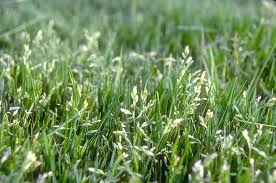Maintenance & renovation practices of one of the oldest 18 hole country clubs west of the Mississippi Host of 1904 Gold Medal Matches in the Olympics
Saturday, April 6, 2013
Poa seedhead reduction application
Each year we attempt to reduce the amount of seed heads that are produced by the poa annua that contaminates our greens. We use a Base 32 growing degree model to determine when to apply this application. The application is a combination of 2 growth regulators working in combination to reduce the amount of seed heads which can create ball roll issues. Heavily infested greens will have more overall seed heads than lower % greens which makes it appear that the product does not work but it does work. Researchers state that you can expect on average a 50% reduction in seed heads. If seed heads do occur, one thing the products do is shorten the length of the seed head stem helping to keep it closer in the canopy and not disrupting ball roll as much.
We started to accumulate data this year around the end of February. The model involves averaging the high and low temperature of the day and subtracting that number from 32, the base number and then accumulating the degree days until they add up to the target range. See the example below.
April 5 High Temp 68
Low Temp 39
Avg Temp 54
Base Temp 32
Avg Temp -Base Temp 22 growing degree days
Each day, the growing degree days accumulate. This season, we did have some days when the average temperature was below 32 but you do not subtract a negative number from the total. The model we use calls for application around 300 growing degree days. Right now we are at 367 growing degree days which is a little higher in than zone than I like to be but I think we will be okay. We will make a second application in 21 days. Last season, our application was made on March 5th and we hit our current total of growing degree days on March 10, 2012. What a change from one year to the next. The average for us is usually about the 3rd week or so of March.
Michigan State has a site that we utilize http://www.gddtracker.net if you have interest in exploring this subject further. There are models for crabgrass, poa annua, and broad leaf weeds.
Subscribe to:
Post Comments (Atom)

No comments:
Post a Comment